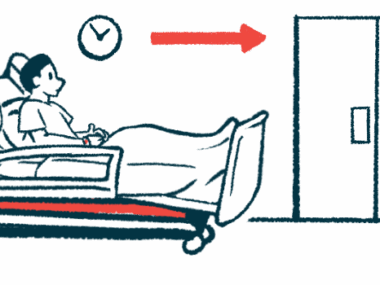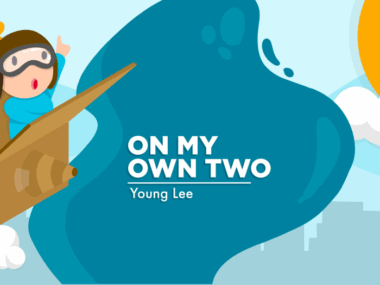Upending the models of traditional masculinity to include weakness
Guys with CMT can find ways to be a man and their authentic selves
Written by |

If being a man truly meant being as swift as a coursing river, with all the force of a great typhoon, with all the strength of a raging fire, all while being as mysterious as the dark side of the moon, every guy with Charcot-Marie-Tooth disease (CMT) might well be doomed.
Thankfully, I don’t believe anyone genuinely believes every guy must aspire to such exacting measures before feeling secure in his masculinity. No, such measures are simply words that happened to make for a catchy song to feature in Disney’s 1998 animated film, “Mulan.”
However, as ridiculous as the lyrics to “I’ll Make a Man Out of You” might be, the notion that there are only a handful of valid ways to be masculine is also ridiculous. And yet many guys still feel pressure to live up to others’ ideas of masculinity.
I’ve been thinking about this for the past few months as I’ve spoken to more guys with CMT. I believe almost every guy with the condition has, at times, felt emasculated because of their symptoms or felt that their disease was blocking them from being the man of their aspirations.
I’ve certainly had a taste of that. Although I wouldn’t say I grew up in a toxic environment, it had some collective assumptions about what being an upstanding guy ought to mean and what roles guys ought to play in society.
Specifically, the fairly conservative Christian community I grew up in had a strong belief in traditional gender roles. And colored by such beliefs, my guy friends and I, as children, all assumed we should aspire to lead, protect, and become heads of households — all roles we understood as best suited for those with physical strength.
Thus, I had moments when my CMT weaknesses made me question my self-worth or wonder if I should try to be more aggressive or domineering to compensate.
That’s not to say that traditional gender roles can’t work for many folks, or that the archetypically strong and stoic image of a masculine guy is inherently toxic. But I don’t know if any specific manifestation of some masculine ideal is worth celebrating if the cost is making some folks feel inferior.
Coming to manhood with CMT
A few months ago, I discussed this issue in person with Joe Hogan, a CMTer, compliance director at Disney, and actor. Hogan spoke to me about what it was like to grow up in the ’60s as a gay CMTer who just wanted to fit in, and we followed up on our talk in text messages.
As with many CMTers, Hogan had weak hands, an odd gait, and he couldn’t jump like many of his classmates. Hogan felt his physical weakness highlighted to his peers all the ways he wasn’t like other boys — not masculine, at least not in the way everyone else seemed to understand the concept.
Instead, as Hogan tells it, he seemed to fall in line with the stereotype many folks had of gay men at the time — sissy, effeminate, and weak.
Many folks in Hogan’s life framed masculinity and sexuality in rigid ways that weren’t compassionate to guys like Hogan, and for many years that took a heavy toll on him. This perceived lack of masculinity, he said, drove him to try to overcompensate for years, to adopt an aura of what he hoped would be “hypermasculine.” And this affectation eventually led him to abuse drugs and alcohol.
Hogan says he’s now in a much better place, though it’s taken him years to get there — years to learn to embrace the various aspects of what makes him who he is. It’s an act of self-love, to have compassion for himself and others.
And now, with these experiences behind him, how does Hogan now understand masculinity — this contentious idea about which there’s such conflict for many?
“It’s about being authentic,” Hogan told me.
That’s the understanding he’s gained. For him, masculinity is when men strive to live authentically in whatever way that may manifest it. His understanding is one I can respect.
This sense of masculinity acknowledges that every one of us guys may each have his own goals, influences, and aspirations. It permits us to allow ourselves some grace when we find ourselves overly concerned that we’re failing to live up to someone else’s subjective ideal. And it happens to be more dynamic, more fun, and more welcoming for many who are in disability spaces.
In fact, I think the Mulan of the Disney movie, a woman, would resonate with this understanding, too. After all, “Mulan” is a story about how embracing an alternate way of being a man in ancient China ultimately saves it from invaders.
Note: Charcot-Marie-Tooth News is strictly a news and information website about the disease. It does not provide medical advice, diagnosis, or treatment. This content is not intended to be a substitute for professional medical advice, diagnosis, or treatment. Always seek the advice of your physician or other qualified health provider with any questions you may have regarding a medical condition. Never disregard professional medical advice or delay in seeking it because of something you have read on this website. The opinions expressed in this column are not those of Charcot-Marie-Tooth News or its parent company, Bionews, and are intended to spark discussion about issues pertaining to Charcot-Marie-Tooth.






Nicolas Gautrot
Je suis atteint visible seulement depuis 3 ans !!!! J ai 60 ans le 30 juillet prochain.... C'est très intéressant ce que je viens de lire.... J ai eu aussi un botulisme en 12 /2011 mais j avais quasiment récupéré quand stress chronique depuis 2017 a fini par tout decompensé... Je suis médecin généraliste et je fus un grand sportif jusqu'à 12/2011....
Dan
All true. I grew up in a similar context, but the macho stuff was thankfully not very strongly pronounced. Still, there was a deep assumption — and this goes throughout the culture — that men, especially in certain roles, cannot exhibit weakness or weariness or need. The nature of mild to moderate CMT and how it can go undiagnosed a long time makes it easy for culture of denial to tell CMTers they are fine and should just try harder and not complain. That is more of what I got, which is possibly far more damaging in the long term. I'd also say the "warrior" image and rhetoric used by a lot of CMTers and fundraising organizations for any number of diseases is also a part of a very one dimensional and potentially toxic approach to living with a disease. It supports the idea we are actively going to "defeat" an "enemy" with a "cure" rather than face the reality of a progressive illness we must cope with every day. I feel this is a very imbalance and unhelpful but central aspect of American CMT organizations and their outsized influence online.
George
Dan: I understand your dislike of the warrior image. Not a big fan myself, but I disagree with your implication that we are not going to ever beat CMT and will always just have to accept it. I work with folks who spend 60 to 80 hours a week doing nothing but trying to eradicate CMT and frankly, I think we are closer than ever (I know you have heard THAT for years and years as well). We know what causes the most prevalent forms of CMT and have funded research that will produce therapeutics that will offset the overexpression of PMP 22. We are looking at four or five different delivery systems in case one or two don't work. I think you are a warrior just to live each day with CMT, but trust that there are also warriors on the frontlines of a potential cure. IT WILL HAPPEN.